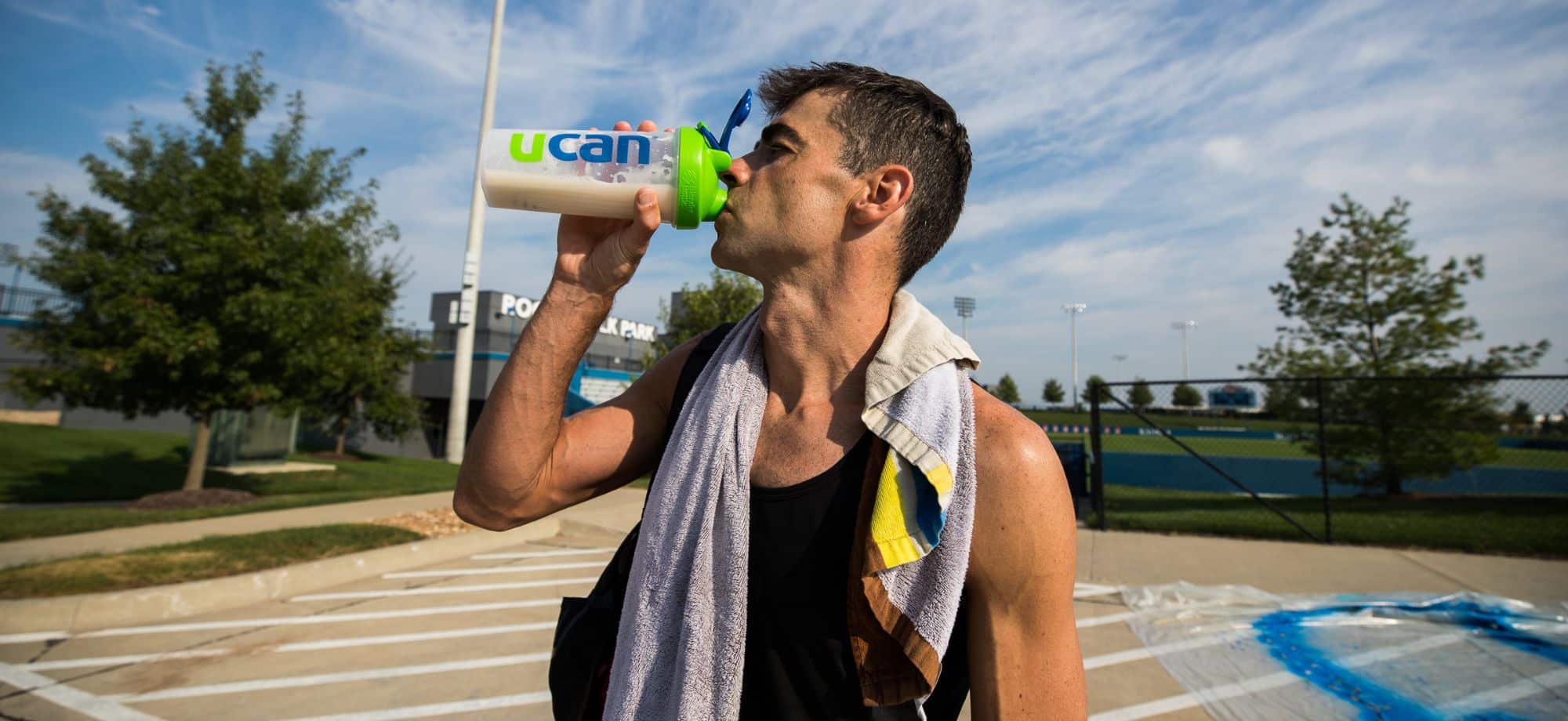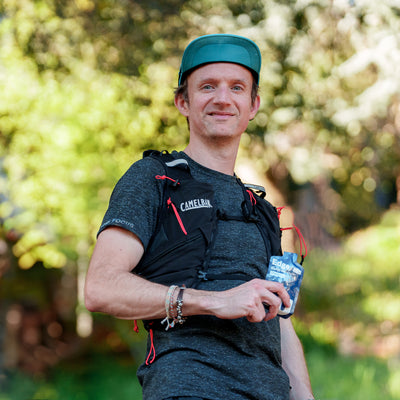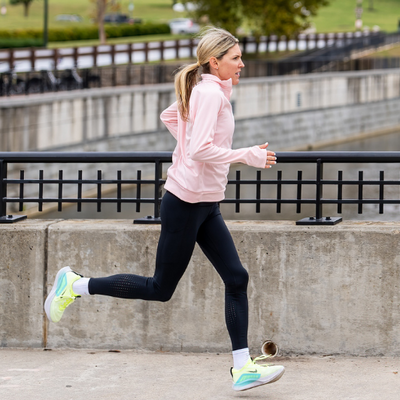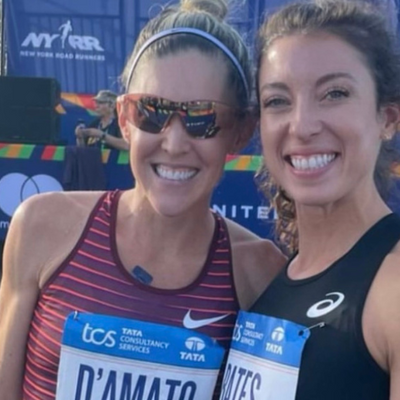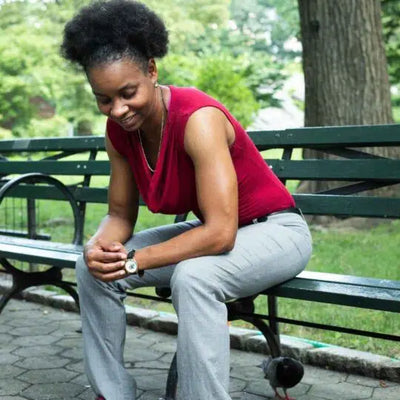Gear for three sports in one – swim, bike, and run, plus nutrition, wearables, and more. Many items fall under the umbrella of “triathlon gear,” but we’re here to help you narrow it down. This is your essential beginner triathlete gear list. We’ll cover everything that you need to know about triathlon gear for both training and racing. This is not a guide for professional triathletes – we’re skipping over the ‘carbon fiber this and carbon fiber that’ to narrow it down to the essential gear for beginner triathletes. Before we jump into our detailed list, here’s a look at all the gear you need to start training for triathlon.
- Tri-suit
- Wetsuit
- Swim goggles
- Swim cap
- Triathlon watch
- Race number belt
- Triathlon bike or aero bars
- Triathlon or cycling shorts
- Helmet
- Sunglasses
- Cycling shoes
- Bike repair kit
- Water bottle
- Energy bars or gels
- Running shoes
- Hat or visor
Tri-suit
A tri-suit is a triathlon-specific piece of clothing designed to be worn throughout a triathlon, from the swim to the bike to the run. It is like a cross between a wetsuit, cycling skinsuit, and lightweight running outfit. Tri-suits often come in one or two pieces and are made from breathable and quick-drying materials. Tri-suits will dry off quickly after the swim leg and provide plenty of padding for the bike portion. These suits are tight and aerodynamic, making them fast in the water, on the bike, and during the run. You can choose from long sleeve, short sleeve, or sleeveless tri-suits depending on the weather and triathlon conditions
Wetsuit
The best wetsuits for triathlons are specifically designed for swimming. This may seem obvious, but wetsuits share many characteristics with tri-suits. Wetsuits are allowed in most triathlons up to a certain temperature. They are worth the investment, especially if you train in cooler open water. However, the best wetsuits will keep you warm in cool water conditions, provide extra buoyancy, and reduce drag in the water. Like tri-suits, you can choose from long sleeve, short sleeve, or sleeveless wetsuits, each offering a different level of warmth and flexibility in the water. Always opt for a wetsuit with the best fit, and don’t be afraid to try out some lubricant to avoid wetsuit chafing.
Swim goggles
Swim goggles are one of the absolute essentials for beginner triathlon gear. They allow you to see underwater while keeping water out of your eyes. After that, you can look at swim goggles with a tint for bright water, with special sealing features, or a pair with anti-fog technology. The overall fit should be your #1 search criteria when choosing a pair of swim goggles.
Swimcap
Many triathlon events require swim caps, making you faster in the water. A good swim cap reduces drag and friction, making you more visible in the water. While you don’t have to wear a swim cap for every triathlon training session, you will probably notice the difference in your swim times without one.
Triathlon watch
Triathlon watches are great for training as you can track your mileage, time, pace, and more. A triathlon watch will help you track your times and progress for each portion of the triathlon. The best triathlon watches have accurate GPS and wireless connectivity capabilities, such as the option to connect to an external heart rate monitor or power meter.
Race number belt
Race number belts are self-explanatory – you snap on a small belt with your race number as soon as you’re done with the swim leg. This avoids pinning a race number to your clothing, adding drag, or damaging your triathlon gear.
Triathlon bike
While you can technically use any bike for a triathlon, having a triathlon bike or a road bike with aero bars is best. Triathlon bikes are super aerodynamic frames designed to go fast in a straight line. They have aerodynamic bar extensions, which you can nestle your forearms during your ride. You can certainly use a road bike for a triathlon, but make sure you get a set of clip-on aero bars which will help increase your speed at the same amount of effort.
Triathlon or cycling shorts
Not everyone will have a tri-suit for every occasion, so you should invest in a pair of high-quality cycling shorts for the bike portion of the triathlon. Even if you race in a tri-suit, having a pair of cycling shorts for training can make things much more comfortable. Make sure you get a pair of cycling shorts with a comfortable chamois, the layer of padding you sit on in the saddle.
Helmet
You can wear just about any helmet during a triathlon. Still, the best triathlon helmets will check off these key areas: well-fitting, aerodynamic, and well-ventilated. A well-fitting triathlon helmet will adhere to your back, shoulders, and neck curves while in the aero triathlon position. When your helmet is well-fitting, it will also be more aerodynamic since it conforms to your frame in the aero position. Lastly, you need a well-ventilated helmet, especially if racing in hot conditions. Some of the best triathlon helmets have vents that can be opened or closed while riding.
Sunglasses
Sunglasses will help protect your eyes from the sun and dirt or particles that get kicked up from the road. Especially during the bike leg, it can be painful to ride with sunglasses which help keep wind, bugs, and dirt out of your eyes. Sunglasses are also beneficial on the run, especially on sunny days. The best pair of sunglasses for a triathlon is a pair that fits your face, especially the area around your eyes. You should have clear vision and a comfortable line of sight with a good pair of sunglasses for the triathlon.
Cycling shoes
Cycling shoes for a triathlon can be triathlon-specific shoes or clipless cycling shoes. Triathlon-specific shoes are best for intermediate or advanced triathletes aiming for a PR. These shoes typically have easy-to-use straps, large heel loops, and well-ventilated materials. Regular cycling shoes – such as road cycling shoes – also work for a triathlon. Still, they may take longer to put on in transition and be less comfortable with wet feet.
Bike repair kit
It is crucial to have a bike repair kit or flat kit, especially on longer training rides. You’ll want an extra tube, tire levers, and a CO2 cartridge or mini-pump at the bare minimum. With that, you can fix a flat tire on a training ride. However, we recommend having a few more items in your bike repair kit, which can often fit into a saddlebag. If you have tubeless tires, we recommend adding a plug (or two) to your bike repair kit. A multi-tool is another excellent addition that you can use to tighten bolts, adjust your saddle, and more.
Water bottle
Regardless of your triathlon's distance and weather conditions, it would be best if you always had hydration ready on your bike. Since you won’t be able to drink during the swim, the bike portion of a triathlon is your first opportunity to rehydrate. All triathlon bikes come with at least one water bottle cage; some even have extra cages behind the saddle. The best triathlon water bottles are medium-to-large, lightweight, and easy to grab. Avoid slippery water bottles, especially during hot races.
 Energy bars or gels
Energy bars or gels
Anytime you are exercising for more than 60 minutes, it is best to fuel your training with an energy bar, gel, or drink. We recommend UCAN's products for long-lasting, steady energy. UCAN products with LIVSTEADY provide you with energy that won't spike your blood sugar like other sugary sports gels or drinks and instead delivers a smooth stream of energy from the beginning of your workout to the end of it. Check out this Nutrition Calculator For Running, Cycling, Swimming, and Triathlon on mymottiv.com to find your exact nutrition needs. You should carry your nutrition in your pockets or a running belt (more on that below) and maintain a consistent fueling schedule. During a triathlon event, aid stations along the route may be provided nutrition. Still, it is best practice not to rely entirely on those stations in case they run out of food, or you can’t stomach their specific products.
Running shoes
Running shoes will make you faster and more comfortable while also preventing injury. The best running shoes for beginners have neutral support, 8mm or less of heel-to-toe drop, and a weight of 7-10 ounces. It is best to have a pair of shoes dedicated to triathlon and run training – you should not use your everyday sneakers.
Hat or visor
Not only with running hats or visors keep the sun out of your eyes, but they can also keep you cooler on the run. The best hats or visors for triathlons have built-in sweatbands and are made of breathable fabric to help the heat dissipate off your head. Want to learn more about triathlon? You can read the Complete Guide to Triathlon Training for Beginner Triathletes on the MōTTIV blog.
